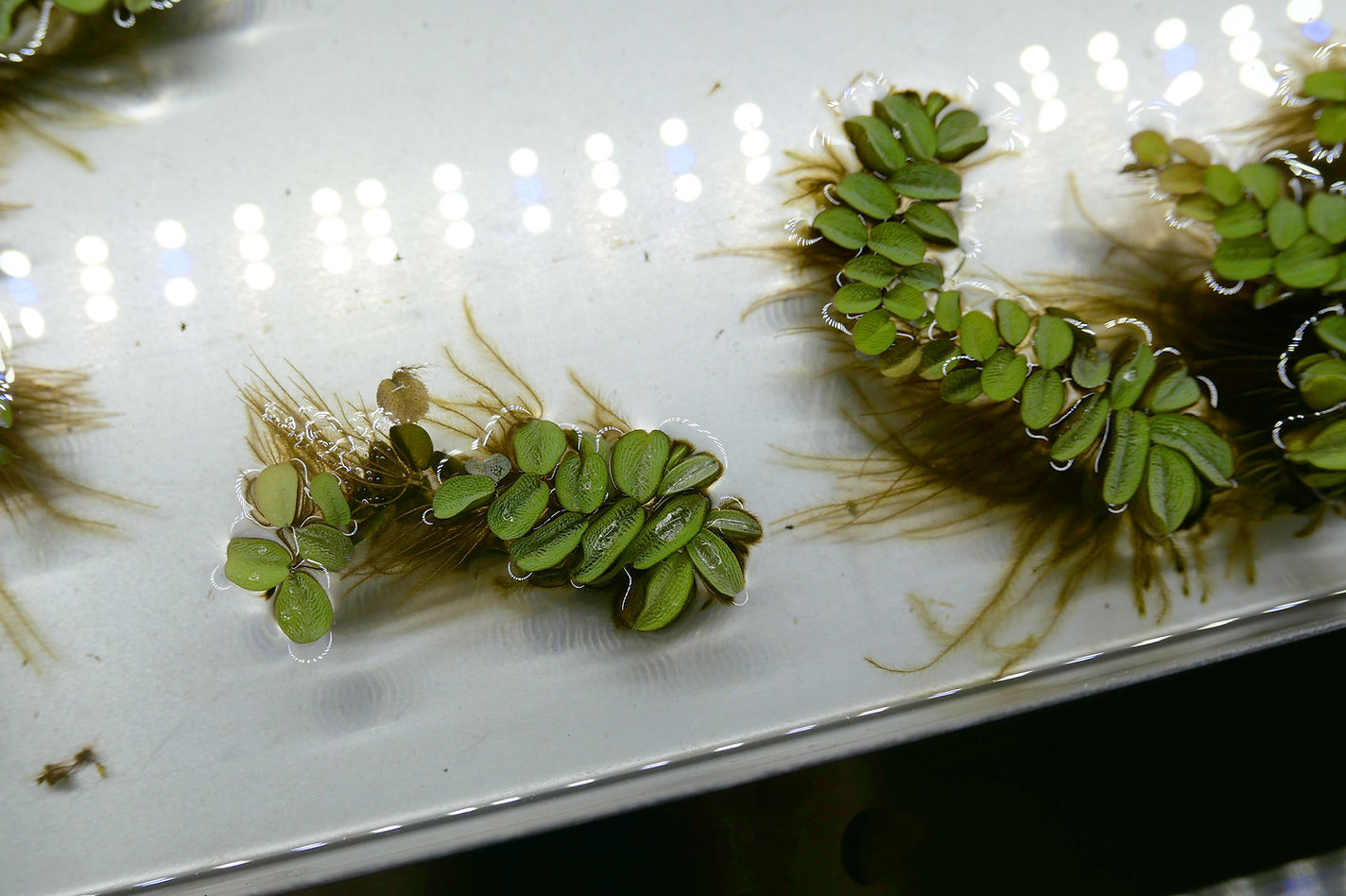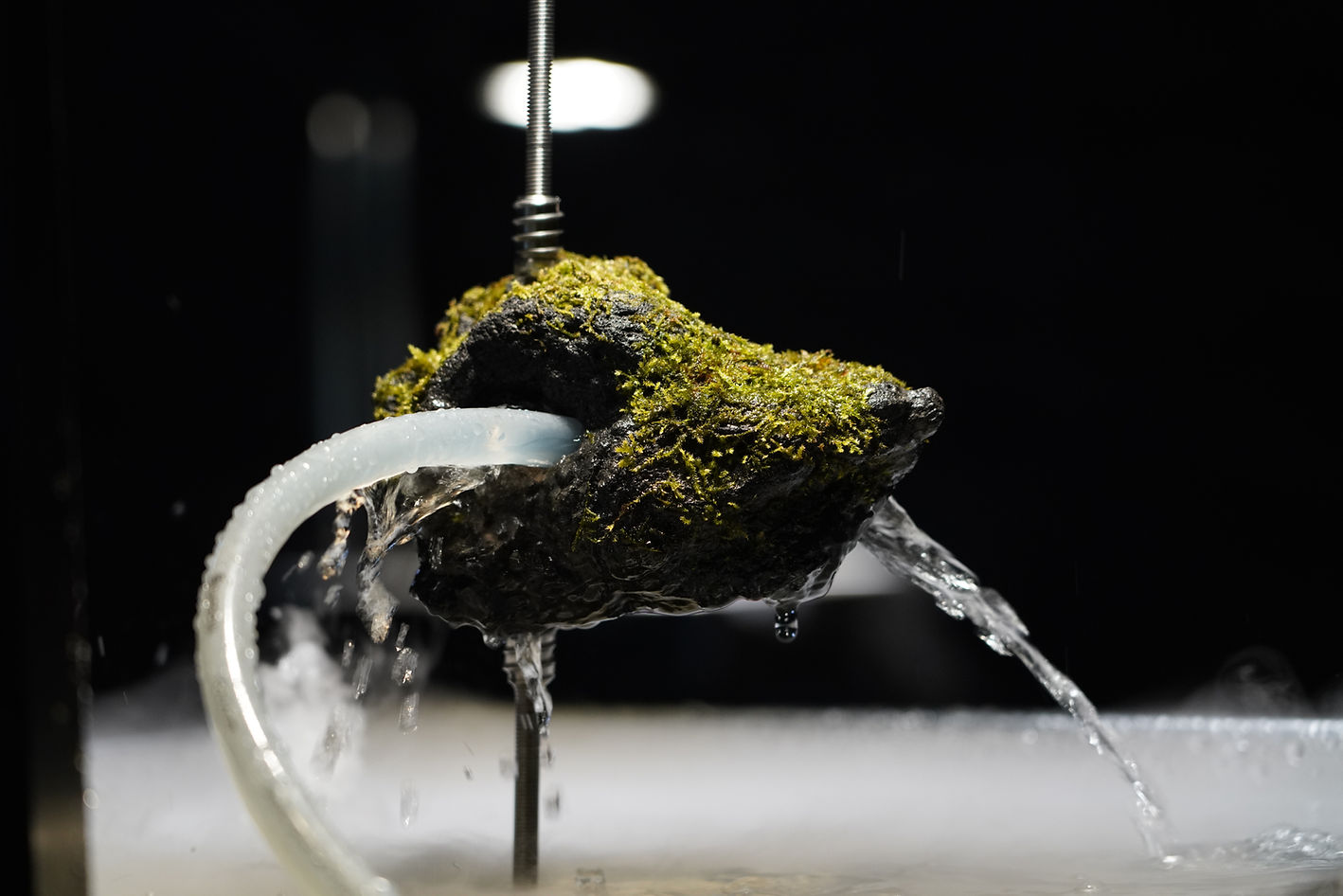Agarmon
TZUSOO
2023
Sculpture, Installation
Agarmon is the species name of monsters born at the moment of orgasm.
(small).jpg)
Agarmon 1
2023
Sculpture, Installation
60 x 60 x 200 mm
.jpg)
Agarmon 2
2023
Sculpture, Installation
123 x 74 x 130 mm
_edited.jpg)
Agarmon 3
2024
Sculpture, Installation
60 x 60 x 200 mm
_edited.jpg)
Agarmon 4
2024
Sculpture, Installation
60 x 60 x 200 mm

Agarmon 5
2025
Sculpture, Installation
130 x 150 x 180 mm
Agarmon 1
TZUSOO
2023
Sculpture, Installation
123 x 74 x 130 mm
Agar Agar, Moss(Fissidens sp., Plagiomnium Cuspidatum, Hypnum Cupressiforme), Water, Water Motor, Rubber Pipe, Light, Stainless Steel Desk, Stainless Steel Plate
In Collaboration with Independent Garden
(small).jpg)
(small).jpg)
(small).jpg)
(small).jpg)
(small).jpg)
(small).jpg)
(small).jpg)
(small).jpg)
.jpg)
(small)2.jpg)
(small)2.jpg)
Recent Posts, Stuttgart, Germany
Agarmon 2
TZUSOO
2023
Sculpture, Installation
60 x 60 x 200 mm
Agar, Moss(Plagiomnium Cuspidatum), Water, Water Feeding Bag, Rubber Pipe, Needle, Light, Stainless Plate, Stainless Pipe, Stainless Pedestal
In Collaboration with Independent Garden
.jpg)

.jpg)
.jpg)
.jpg)
.jpg)
.jpg)
sangheeut, Seoul, South Korea
“I have harbored the desire to become a mother for as long as I can remember. However, as I embarked on my journey toward independence as an artist, this dream became increasingly elusive. Nevertheless, I find solace in fulfilling my enduring longing through my artistic creations, considering them akin to my children and taking a lot of care.”
―TZUSOO’s artist note
Humans experience orgasm through sexual intercourse. The entropy associated with this climatic moment has traditionally been linked to fertilization and the birth of life. However, the artist shifts the focus to contemporary entropy, which is disconnected from fertilization and pregnancy. TZUSOO emphasizes the possibility of redirecting vanishing entropy and rather using it as a conduit for creative expression. Shown for the first time in this exhibition, the series of Agarmon represents 'monsters' that are born at the moment of human orgasm.
The exhibition title, Alma Redemptoris Mater: Our Material Our Redeemer, derives from Alma Redemptoris Mater, one of the four Marian Hail Marys. In the history of Christianity, women in pregnancy and childbirth hold a distinct position, echoing the significance of Mary’s role. The historical context reveals debates surrounding the portrayal of women, from Eve being considered a mere helper or tool to Adam to Mary’s unique position as the one who received God’s message and conceived Jesus. There’s even speculation about the Apostle Paul introducing the Holy Spirit to the Trinity to obscure Mary’s role. Christian doctrine consistently grapples with the contrasting notions of virginity and motherhood, aiming to avoid associating Mary with explicit images of sex and childbirth.
In contrast, TZUSOO’s work deliberately intertwines these themes. Through the creation of Agarmon, a monster born at the moment of orgasm, the artist underscores the inherent, though often unspoken, connection between women's sexual desire and the sacred act of childbirth. While the artist is known for actively employing digitally-based media such as virtual worlds and characters, she further emphasizes the materiality of reality in this series, a theme echoed in the exhibition’s title. Drawing inspiration from the linguistic link between the English word for mother, 'mater,' and the Latin word 'materia,' meaning substance, the artist chooses to interpret it as 'substance' instead of the revered 'mother.' This linguistic choice once again establishes a connection between materiality and motherhood in TZUSOO’s work.
TZUSOO’s recent works can also be interpreted within the context of the history of technology and its perception of women’s birth and reproduction. Throughout history, technologies that contain something or possess an inherent emptiness as a function in themselves—containers such as jars and bowls, and women’s wombs—have often been overlooked in favor of technologies that exhibit force, impact, and dynamic effects, like spears and guns. The latter category has traditionally been associated with masculinity, contributing to the marginalization of women in the technological narrative. However, philosopher Heidegger challenges this perspective by asserting that holding is an active process. He argued that holding involves both taking and keeping, rejecting the notion of a passive, singular act. In the 1930s, historian of technology Lewis Mumford furthered this argument by suggesting that tools and technologies commonly used by women in domestic settings have been unjustly neglected in the history and philosophy of technology. Zoë Sofia, an Australian-based researcher in the philosophy of technology and science, extends Mumford's argument by positing the female womb itself as a form of technology.1 Sophia emphasizes that procreation and reproduction constitute crucial aspects of essential human technology, countering the historically masculinist perspective that has often regarded women's wombs as passive tools or conduits for men's reproductive contributions.
TZUSOO, known for incorporating advanced technologies such as AI into her body of work, aligns with this progressive perspective. The new works featured in this exhibition can thus be seen not only as her embrace of new technologies but also as a continuation of her ongoing exploration of established technological narratives. The artist’s longing for birthing transcends a conventional desire; it embodies a yearning for a more foundational form of technology. This theme resonates consistently throughout TZUSOO’s oeuvre, often characterized by the artist herself as a process of ‘birthing.’ A container that is full is useless. TZUSOO delves into the essence of container technology, recognizing its core function: the continual release of what is already held, facilitating the containment of something new. In embodying this essence, TZUSOO consistently engages in the act of producing and giving birth to a succession of artistic works.
Exploring the intricate relationship between the body and material, TZUSOO presents an expansive body of work across various media. Her works often delves into radical concepts such as disembodiment, gender fluidity, and posthumanism, while also portraying an idealized and harmonious worldview through collaboration with AI. This exhibition unveils the Agarmon series, a collection of new paintings and installations that accentuate materiality—an underlying concept in the artist's body of work.
TZUSOO has used childbirth and pregnancy as the main subject of her work since Schrödinger’s Baby (2019), a video work depicting a baby existing in a virtual world. In her Agarmon series, where the artist’s desires take center stage, she attempts to dissolve the distinctions between digital and real life by materializing beings born in the digital domain into our physical reality.
Text | sangheeut
-
1 Sofia, Zoë. “Container Technologies.” Hypatia 15, no. 2 (2000): 181–201.
Agarmon 5
TZUSOO
2025
Sculpture, Installation
130 x 150 x 180 mm
Agar Agar, Moss(Plagiomnium Cuspidatum), Water, Water Feeding Bag, Rubber Pipe, Needle, Light, Stainless Plate, Stainless Pipe, Stainless Pedestal
In Collaboration with Independent Garden

Photograph by Hong Cheolki, Image provided by MMCA

Photograph by Hong Cheolki, Image provided by MMCA
.jpg)
Photograph by Hong Cheolki, Image provided by MMCA
Agarmon 3
TZUSOO
2024
Sculpture, Installation
60 x 60 x 200 mm
Moss, Volcanic Stone, Water, Water Motor, Rubber Pipe, Light, Fog Machine, Stainless Installation
in collaboration with Independent Garden
.jpg)
.jpg)
Agarmon 4
TZUSOO
2024
Sculpture, Installation
60 x 60 x 200 mm
Moss, Volcanic Stone, Water, Water Motor, Rubber Pipe, Light, Fog Machine, Stainless Installation
in collaboration with Independent Garden
"Agarmon" is a series of sculptures that take the form of babies.
I have always wanted to become a mother, but living an independent life as an artist while also becoming a mother has not been easy. So, in 2018, I gave birth to "Schrödinger's Baby" in the digital world. "Schrödinger's Baby" is a concept inspired by the quantum physics theory of Schrödinger's Cat. Because I believe the digital world exists equally alongside the physical world, these babies both exist and do not exist at the same time.
Since then, my biological clock has started ticking. There is a limited period during which a human woman can conceive and give birth (sadly!). After I turned thirty in 2023, I began to feel anxious, and I started bringing my childlike babies, who had existed in the digital world, into the physical world. I began to transform "digital existence" into "material."
"Agarmon" is a monster made of agar, a seaweed component, and moss. The moss growing on Agarmon's body is alive, so it requires continuous moisture and proper light. Agarmon needs constant care. When moving Agarmon, I must be as careful as I would when carrying a baby in a basket. Passing through airport security has been a challenge, as I had to explain Agarmon's identity.
Starting in 2024, I began creating Agarmon using not only agar but also other materials like stones. In this way, I continue to transform the entropy of pregnancy, childbirth, and nurturing into sculpture, fulfilling the human desire for creation.
_JPG.jpg)
.jpg)
.jpg)
Fun facts
In English, the material of Agarmon's body is “Agar.”
In German, agar is referred to as “Agar Agar.”
In Korean, “Agar” means “baby.”
Agarmon
TZUSOO
2023
Drawings
(small).jpg)
(small).jpg)
(small).jpg)
(small).jpg)
(small).jpg)
(small).jpg)
(small).jpg)
(small).jpg)
(small).jpg)
(small).jpg)
(small).jpg)
(small).jpg)
(small).jpg)
(small).jpg)
(small).jpg)